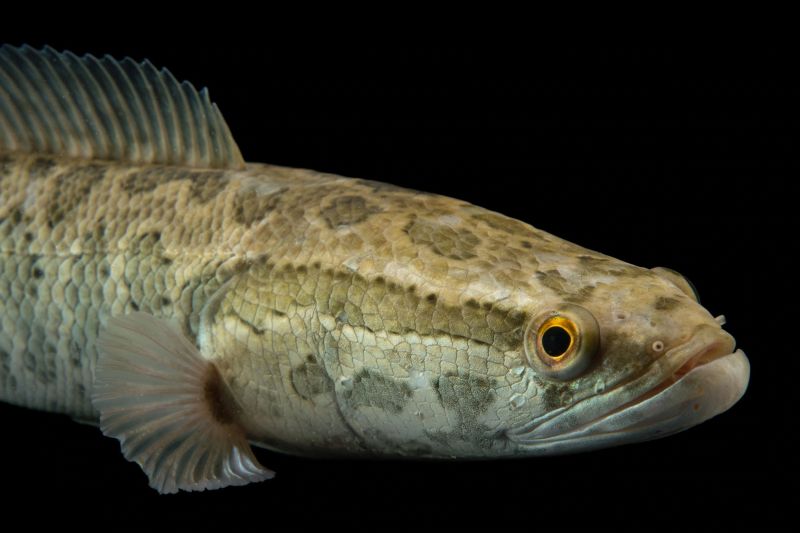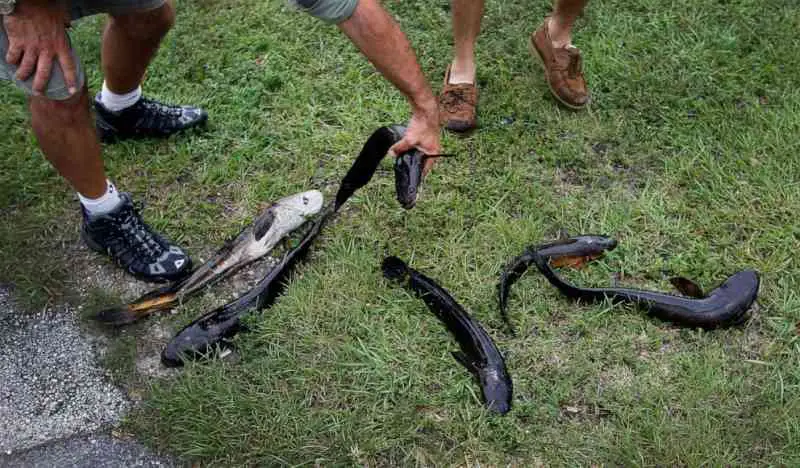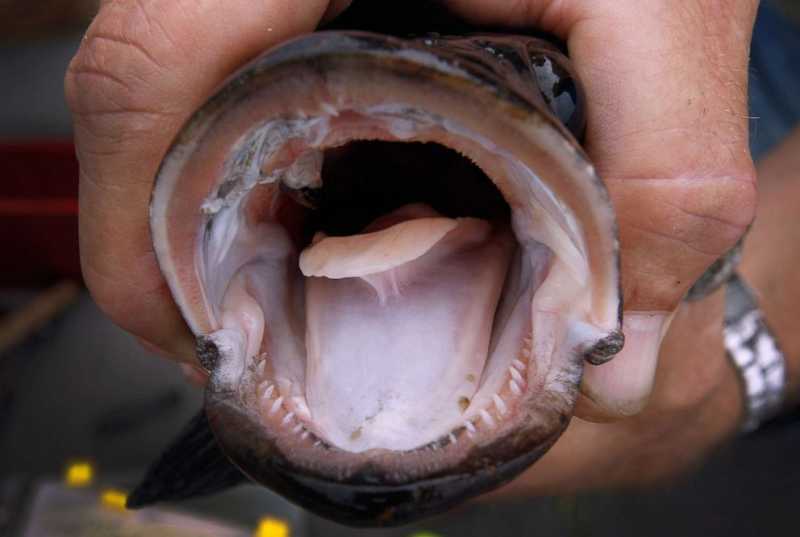Northern Snakehead: A Fish that can Survive on Land for up to 4 Days

The Northern Snakehead (Channa argus) is a large, aggressive freshwater fish known for its distinctive appearance and unique survival abilities. This species can grow up to 4 feet in length and weigh up to 15 pounds.
It is characterized by its elongated body, large mouth with sharp teeth, and snake-like head, which gives it its name. Unlike many fish, the Northern Snakehead can survive on land for extended periods, up to 4 days, due to a specialized air bladder functioning as a rudimentary lung.

©Joel Sartore
Geographic Distribution
Originally native to China and Russia, the Northern Snakehead has spread far beyond its native range. It has been found throughout various freshwater habitats in Asia and Africa.
In recent years, it has become an invasive species in multiple countries around the world, including the United States. In the U.S., Northern Snakeheads have been reported in 15 states, including Georgia, posing significant ecological challenges.

© humanwildlifeecology
Habitat Preferences
Northern Snakeheads thrive in a variety of freshwater environments such as lakes, marshes, ponds, and streams. They can adapt to different temperature ranges but are not capable of surviving in saltwater. Their ability to breathe atmospheric oxygen allows them to endure conditions that would be unsuitable for many other fish species.
Physical Characteristics
Size: Can grow up to 4 feet in length and weigh up to 15 pounds.
Appearance: Long, cylindrical body with a large mouth full of sharp teeth and a distinctive, snake-like head. They have dark, blotchy patterns on their skin which can vary in color from light tan to dark brown.
Fins: Dorsal and anal fins run along a significant portion of their bodies, aiding in their swift, snake-like swimming motion.
Reproduction
Breeding Season: Typically occurs from late spring to early summer.
Nesting: Snakeheads are known to build nests using aquatic vegetation. They are highly protective of their young, guarding the nests aggressively.
Egg Production: A single female can lay between 1,300 and 15,000 eggs per spawn, and can spawn multiple times per year, with a potential to lay up to 50,000 eggs annually.
Survival on Land
Air Breathing: The presence of a specialized air bladder allows them to absorb oxygen directly from the air, enabling them to survive out of water.
Land Mobility: They can use their pectoral fins to wriggle and move across land, often seeking new water bodies during periods of drought or when their current habitat becomes unsuitable.

© Joe Raedle/Getty Images
Ecological Impact
As a top predator, the Northern Snakehead has a substantial impact on local ecosystems. Their diet is diverse, including fish, small birds, reptiles, and various other species. This predatory behavior can lead to a decline in native species populations and disrupt local food webs.
The rapid reproductive rate of Northern Snakeheads exacerbates this problem. They can produce thousands of eggs with each spawning, facilitating swift population growth and territorial expansion.
Invasive Impact
Predation: As apex predators, they consume a wide variety of organisms, including native fish, amphibians, and invertebrates, which can lead to the decline of native species.
Competition: Their aggressive nature and rapid reproduction can lead to the displacement of native species, altering the balance of the ecosystem.
Economic Impact: Their presence can affect local fisheries and recreational fishing, potentially leading to economic losses.

Control Measures
Given the ecological threats posed by Northern Snakeheads, various control measures have been implemented:
Public Awareness: Educating the public about the dangers of transporting and releasing non-native species.
Regulatory Measures: Enforcement of laws prohibiting the possession and transportation of Northern Snakeheads. The Lacey Act in the United States prohibits their importation and restricts their movement across state lines to prevent further spread.
Biological Control: Research into potential natural predators or diseases that could be used to control snakehead populations.
Physical Removal: Organized fishing derbies and targeted removal efforts to reduce snakehead populations.
Hooking An AGGRESSIVE Snakehead!
The Northern Snakehead represents a significant ecological threat due to its aggressive nature, high reproductive rate, and unique ability to survive on land.
Its presence in non-native regions disrupts local ecosystems and threatens biodiversity. Ongoing efforts to control their population and prevent further spread are crucial to protecting native species and maintaining ecological balance.
The case of the Northern Snakehead underscores the broader challenges of managing invasive species and preserving the integrity of global ecosystems. Effective management and control strategies are essential to mitigate their impact and protect native ecosystems.
